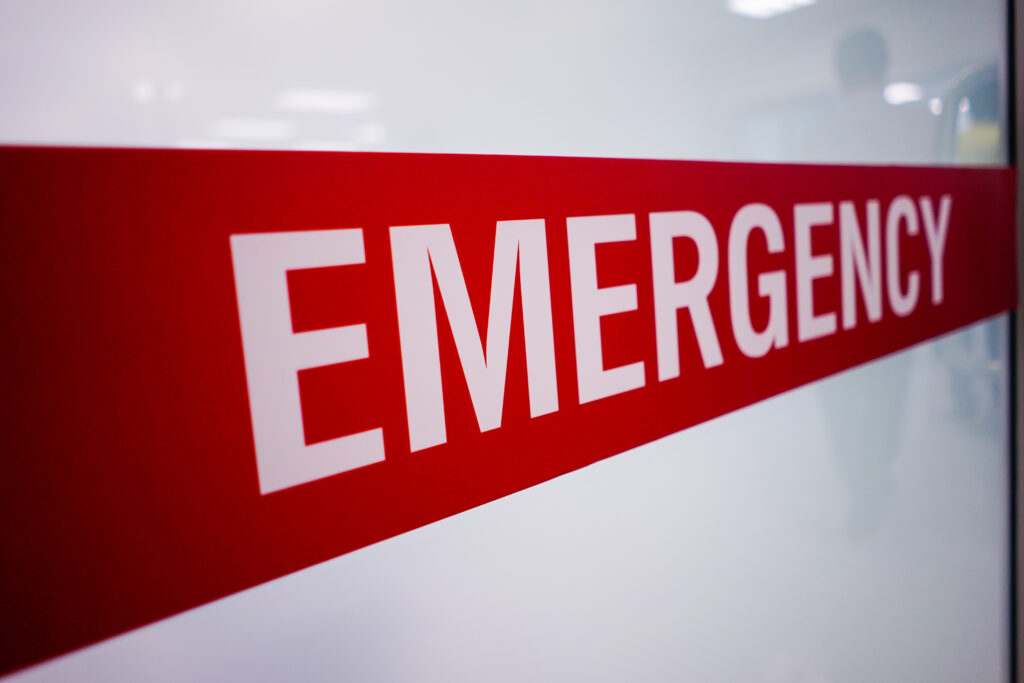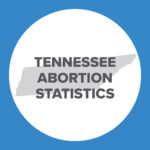Six States and Their Radical Approaches to Abortion Law

This is Issue 48 in the On Point Series.
In 2019, there was a flurry of activity around abortion laws at the state level on both sides of the abortion debate. While states such as Alabama, Louisiana, and Missouri passed life-affirming legislation, other states went a decidedly different direction in codifying Roe v. Wade into state law and some went even further than the landmark 1973 Supreme Court ruling.
This paper will briefly examine six states that passed permissive abortion legislation in 2019 and 2020: Illinois, Maine, New York, Rhode Island, Vermont, and Virginia. These states rolled back protections for both the mother and developing child in an attempt to provide abortion “safe havens” across the country. In addition, several of these states expanded upon the definition of who can provide abortion in the state beyond physicians. This paper will begin examining the actions of these six states in chronological order.
New York
On January 22, 2019, the 46th anniversary of Roe v. Wade, New York Governor Andrew Cuomo (D) signed into law the Reproductive Health Act, what at that time was the nation’s most radical abortion law to date. To celebrate the occasion, Gov. Cuomo lit up One World Trade Center in pink—the signature color of Planned Parenthood. The legislation codified Roe into state law and then went further by decriminalizing abortion, removing it completely from the criminal code, thereby protecting medical professionals who perform abortion from prosecution.
From the legislative intent section: “The legislature finds that comprehensive reproductive health care, including contraception and abortion, is a fundamental component of a woman’s health, privacy and equality.” The language about “fundamental right” appears shortly thereafter in the bill text, thereby enshrining Roe into state law.
In a statement, Gov. Cuomo said, “Today we are taking a giant step forward in the hard-fought battle to ensure a woman’s right to make her own decisions about her own personal health, including the ability to access an abortion. With the signing of this bill, we are sending a message that whatever happens in Washington, women in New York will always have the fundamental right to control their own body.” What the governor essentially said is that New York will now be a “safe haven” for abortion, should Roe ever be overturned by the Supreme Court.
New York also expanded who can perform abortions in the state by declaring that “a health care practitioner licensed, certified, or authorized” under state law “acting within his or her lawful scope of practice” may perform abortions using their professional judgment and may do so up to 24 weeks or if either the fetus is deemed not viable or the mother’s “life or health” is at risk. Under New York law, a health care professional may be a physician, a physician assistant, a nurse practitioner, or a certified nurse midwife.
In addition, the act also decriminalizes abortion, in removing it from the criminal code, so a medical professional cannot be prosecuted for performing an abortion. This is significant as there’s now no criminal remedy available to women for an illegal abortion. The act also removes the killing of an “unborn child with which a female has been pregnant for more than twenty-four weeks” from the definition of a homicide, meaning that the killing of a fetus in utero by anyone—not just an abortionist performing a legal procedure—is no longer actionable as a homicide. Laws of this type, under the rubric of Unborn Victims of Violence, have been adopted in 38 states[i] and by the U.S. Congress as “Laci and Conner’s Law,”[ii] in memory of a woman and her unborn child who were slain by the woman’s husband in the notorious Scott Peterson case in San Francisco[iii].
With the loosening of many decades-old restrictions of abortion, the passage of the Reproductive Health Act is a sad development in a state where nearly one out of every four pregnancies ends in abortion and 37 percent of resident abortions [iv] are performed on black women.
Maine
The State of Maine prohibits abortions after viability except to protect the life of the mother. In Maine, viability is defined as “the state of fetal development when the life of the fetus may be continued indefinitely outside the womb by natural or artificial life-supportive systems.” However, in June 2019, Gov. Janet Mills (D) signed two pieces of legislation designed to further loosen limits on abortion in the state.
The first piece of legislation, entitled “An Act to Authorize Certain Health Care Professionals to Perform Abortions,” was designed to expand who could perform abortions in the state. It defined “health care professionals” to include not only physicians but also nurse practitioners and physician assistants. As a result of the increased number of providers, the number of clinics providing abortions grew from three to 18. Provided the health care professionals meet the licensing requirements of their respected professions, they can legally perform abortions in the state.
Gov. Mills justified the expansion in the following statement: “Allowing qualified and licensed medical professionals to perform abortions will ensure that Maine women, especially those in rural areas, are able to access critical reproductive health care services when and where they need them from qualified providers they know and trust.”
A few short days after signing the first act into law, Gov. Mills signed into law “An Act to Prevent Discrimination in Public and Private Insurance Coverage for Pregnant Women in Maine.” This law requires private insurance to pay for abortions, and, in an attempt to circumvent the Hyde Amendment, also requires that abortions which are not approved under Medicaid must be funded by the state. The state will use state, not federal, tax dollars to pay for abortions for Medicaid-eligible women, although a new law must be passed to make up the $2 million budget shortfall from when Maine opted out of Title X funding due to the Trump Administration’s decision to bar abortion providers, including Planned Parenthood, from the program.
Vermont
On June 10, 2019, Republican Governor Phil Scott signed into law the Freedom of Choice Act.
In Vermont, the state has codified the “the fundamental right of every individual who becomes pregnant to choose to carry a pregnancy to term, to give birth to a child, or to have an abortion” and in no way shall the government “deny or interfere” with such rights.
The state goes on to broaden the definition of who can provide abortion when it declares: “‘Health care provider’ means a person, partnership, or corporation, including a health care facility, that is licensed, certified, or otherwise authorized by law to provide professional health care services in this State to an individual during that individual’s medical care, treatment, or confinement.”
With respect to a gestational limit on abortion, the state does not include any restrictions on timing or use the word “viability” anywhere in the new act. Instead, the act leaves it to the discretion of abortionists when it states: “Health care providers providing abortion care in Vermont make determinations regarding the provision of safe and legal abortion within the scope of their practice and license, and in accordance with the relevant standards of medical practice and guiding ethical principles.” This is a radical departure from even other permissive states’ laws, since the provision essentially says a professional can use their own judgment, meaning that if they want to provide abortion on-demand until birth, they likely could legally do it.
Moreover, the statute allows any individual a novel right to sue for any violation of the new act. The law says, “an individual injured as a result of a violation of this chapter shall have a private right of action in Superior Court against a public entity for injunctive relief arising from the violation” plus a court may choose to award costs and attorneys’ fees to an individual who “substantially prevails” in such an action.
As a sponsor of the bill, State Rep. Ann Pugh, said, “In this time when, across the country and nationally, when Roe v. Wade and individuals’ access to private, reliable reproductive health care and abortion is in question, we thought we’d better be clear.” And clear the state was: there will be no restriction on abortion in the State of Vermont.
Illinois
Not to be outdone by New York, Illinois joined the Empire State in drastically rolling back abortion limits. On June 11, 2019, Democratic Governor J.B. Pritzker signed into law the Reproductive Health Act. The act declares abortion to be a fundamental right, giving it the highest possible standing in the constellation of state constitutional rights.
Furthermore, in listing who is allowed to perform an abortion, Illinois defined a “health care professional” to include a “physician, advanced practice registered nurse, physician assistant, or person acting under the supervision of one of the above” thereby dramatically expanding who may perform abortions in the state.
Like the other radical states listed in this paper, Illinois rolled back all vestiges of former limits on abortion. First, it formally repealed the Illinois Abortion Act of 1975, which had imposed criminal penalties on physicians performing abortions. The law had been enjoined by courts and been unenforced for decades but had remained on the books. The bill further declared “that a fertilized egg, embryo, or fetus does not have independent rights under the law, of this State.” This new definition in the state’s Reproductive Health Act really underscores the elimination of the human being in unborn form as any kind of rights-bearing entity.
In addition to the law’s removal of common-sense abortion limitations, it also went far beyond and expanded coverage of abortion by private insurers. Previously, private insurers were required to cover contraception, maternity care, and infertility treatments, but under the Reproductive Health Act they must now also cover abortions. Finally, the law repealed the state’s ban on partial-birth abortion, a particularly gruesome method that involves partially delivering the unborn child, killing it by opening a hole in the base of its skull, suctioning out the child’s brains, and removing the child, its cranium collapsed, from the womb. The national ban on this procedure, however, remains in place.
Despite the permissive turn in Illinois’ abortion law, one positive policy remains on the books in Illinois: the parents of a minor seeking an abortion still must be notified 48 hours before the procedure.
The legislation sets Illinois up to be a safe haven for abortion seekers from neighboring states with life-affirming laws, as Gov. Pritzker said, “We’re going to be here for women if they have to be refugees from other states.” Other advocates for the measure, like Democratic State Rep. Kelly Cassidy, similarly hailed the bill, saying, “We are building a firewall around Illinois to protect access to reproductive healthcare for everyone.” As a result of Gov. Pritzker’s and the legislature’s actions, it is likely Illinois will see a significant uptick in abortions, possibly from women coming from out-of-state, due to the new law. Abortions had already increased by seven percent[v] in 2018 after previous state legislation to provide taxpayer funds for the procedure.
Rhode Island
Following its nearby neighbors Vermont and Maine, Rhode Island became the next New England state to expand access to abortion. On June 19, 2019, Democratic Governor Gina Raimondo signed the Reproductive Privacy Act into law.
The act prohibits abortion after fetal viability, which is defined as “that stage of gestation where the attending physician, taking into account the particular facts of the case, has determined that there is a reasonable likelihood of the fetus’ sustained survival outside of the womb with or without artificial support.” In Rhode Island, only physicians may perform abortions.
The radical departure in the law comes in later provisions in the legislation. First, the legislation ensures medical professionals will no longer be subject to charges for felony assault for performing abortions, which removes legal recourse for a woman who was coerced or otherwise forced to undergo an abortion against her will. Next, the law repealed provisions that required spouses of married women seeking abortions to receive notification before proceeding with the abortion. Sadly, this means that Ocean State fathers of an unborn child no longer have a say in whether the mother gets an abortion. Finally, the act repeals state law prohibiting partial-birth abortions, which had already been superseded by the federal partial-birth abortion ban.
Like many of her Democratic counterparts, Gov. Raimondo also asserted that Rhode Island would be a safe haven for abortion, in commenting that the bill “protects a woman’s access to reproductive health care here in Rhode Island at a time when that access is under threat at the federal level and in states across our country.”
Virginia
Virginia was the first state in 2020 to pass legislation easing limitations and removing safeguards regarding abortion. On April 10, Governor Ralph Northam (D) signed into law the Reproductive Health Protection Act, which expanded who can perform abortions in the state and repealed other safety protections.
The Reproductive Health Protection Act states in part that “it shall be lawful for (i) any physician licensed by the Board of Medicine to practice medicine and surgery, or (ii) any person jointly licensed by the Boards of Medicine and Nursing as a nurse practitioner and acting within such person’s scope of practice to terminate or attempt to terminate a human pregnancy or aid or assist in the termination of a human pregnancy by performing an abortion or causing a miscarriage on any woman during the first trimester of pregnancy.”
Gov. Northam touted the sweeping new legislation when he declared: “No more will legislators in Richmond—most of whom are men—be telling women what they should and should not be doing with their bodies. The Reproductive Health Protection Act will make women and families safer, and I’m proud to sign it into law.”
But does the law make “women and families safer”? Other key provisions of the law repeal decades-old provisions designed to keep the mother and her unborn child safe. First, the law removes a 24-hour waiting period and a mandatory ultrasound law. These provisions gave a mother valuable information about the life growing inside her, and if a woman was at all unsure about an abortion or was feeling coerced to get an abortion, such provisions gave her the opportunity to weigh her decision and perhaps change her mind.
Moreover, the law removes a provision that said facilities performing five or more first trimester abortions each month be designated as hospitals for the purpose of law. This is significant because no longer will abortion centers be held to the same rigorous health standards as hospitals but will instead be held to a lower standard, which could put the mother at risk from complications beyond those the reproductive health facility is capable of treating. When abortion complications include hemorrhage, uterine perforation, failed abortion, and more, it’s evident that Virginia is taking a risk in lowering the standard of care available to its women, which does not at all make women “safer,” as the governor asserted.
Conclusion
One of the common threads in these progressive states involves the concept of viability and what a physician, physician’s assistant, or nurse practitioner may determine is the viability of an individual fetus. According to the pro-abortion Guttmacher Institute, induced surgical abortions accounted for nearly 526,000 of all 862,000 abortions in 2017. However, as my Lozier Institute colleagues point out, “The most recent data from both the U.S. Centers for Disease Control and Prevention (CDC) and the Guttmacher Institute on total abortions and late-term abortions suggests that approximately 1.3% of abortions are carried out at 21 weeks of gestation and above. The true percentage may be even higher, as the CDC estimate does not include multiple states where late-term abortions take place.” This means that there are more than 11,000 late-term abortions every year—that is, those that take place after the child could live outside the womb.
Now consider the states listed above that allow late-term abortions, such as New York, Vermont, and Illinois, and think about the discretion now afforded to health care providers regarding viability. It is likely we will see the number of lost lives due to late-term abortion rise in the next few years with these laws in place. Moreover, consider the new discretion now given not only to physicians but also to physician’s assistants, nurse practitioners, and even certified nurse midwives, coupled with the decriminalization of abortion in several of these states. With the opportunity for a number of health care professionals with lower levels of credentials and training to provide abortion on-demand until birth at their discretion, it’s likely we may also see not just late-term abortions rise in these states but also health complications for the mothers.
While pro-lifers should be encouraged by developments in the many states that are passing life-affirming legislation, they should be ever vigilant as to the states expanding abortion and repealing decades-old laws, upheld by higher courts in case after case, that afford women the benefits of informed consent – not to mention the motivation and the means to change their minds and make a decision for life.
Katey Price, J.D. is an associate scholar of the Charlotte Lozier Institute who works as a digital media consultant and attorney. She lives in Alexandria, Va.
[i] “State Laws on Fetal Homicide and Penalty-enhancement for Crimes Against Pregnant Women,” National Conference of State Legislatures at https://www.ncsl.org/research/health/fetal-homicide-state-laws.aspx (viewed May 29, 2020).
[ii] P.L. 108-212.
[iii] Jesse Weber and Alberto Luperon, “Scott Peterson’s Last Chance at Freedom: What to Know About His California Supreme Court Appeal,” at https://lawandcrime.com/live-trials/live-trials-current/scott-peterson/scott-petersons-last-chance-at-freedom-what-to-know-about-his-california-supreme-court-appeal/ (viewed May 29, 2020).
[iv] “Abortion Reporting: New York (2017). Charlotte Lozier Institute at https://lozierinstitute.org/abortion-reporting-new-york-2017/ (viewed May 29, 2020).
[v] “Abortions in Illinois Increased about 7 Percent in 1 Year,” (January 26, 2020), NBC Chicago, at https://www.nbcchicago.com/news/local/abortions-in-illinois-increased-about-7-percent-in-1-year/2207707/ (viewed May 29, 2020).





























